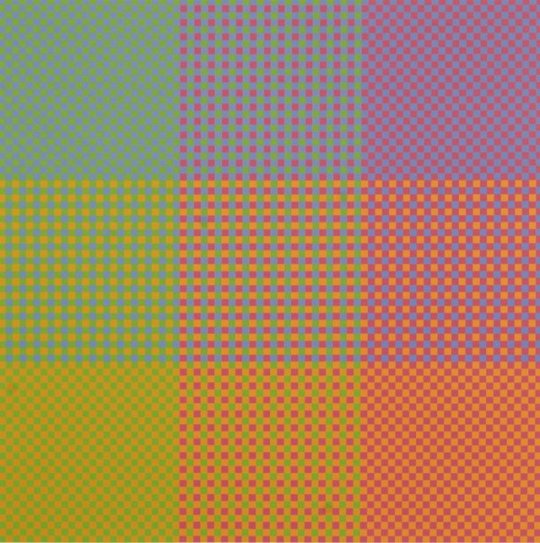#sanford wurmfeld
Text
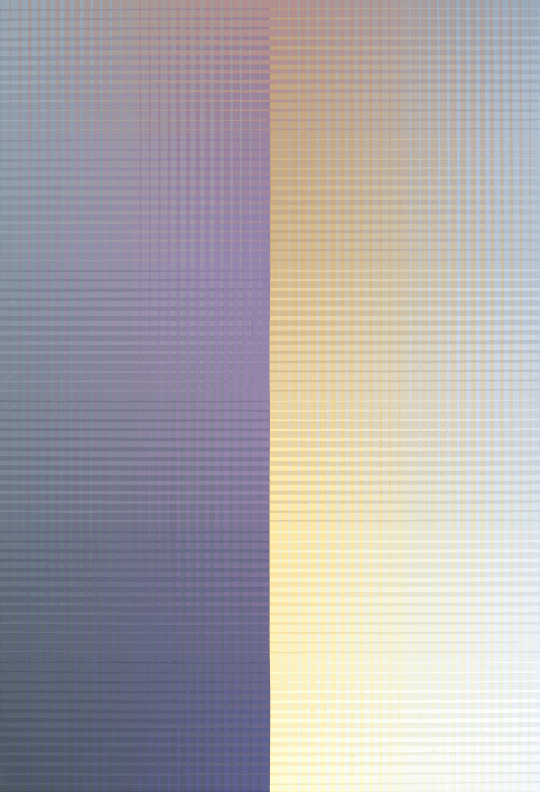
Sanford Wurmfeld, “II-39 (-RO) – (21)” (2022),
Acrylic on canvas 61 1/2 x 42 inches,
Courtesy: David Richard Gallery
#art#abstraction#abstract#painting#minimal#geometric#colors#composition#vertical#horizontal#sanford wurmfeld#david richard gallery
16 notes
·
View notes
Photo

Sanford Wurmfeld
“II-12 (LN-BG/N-B) + B/1(O)” (2018)
acrylic on canvas
48 notes
·
View notes
Photo

Sanford Wurmfeld, 11-15#1B (V-Y), 2001, Acrylic on canvas
111 notes
·
View notes
Photo

Sanford Wurmfeld
II - 18 + B/2 (YGY-VBV/Ys + Vt), 2016
Acrylic on canvas
59 × 90 in
17 notes
·
View notes
Photo
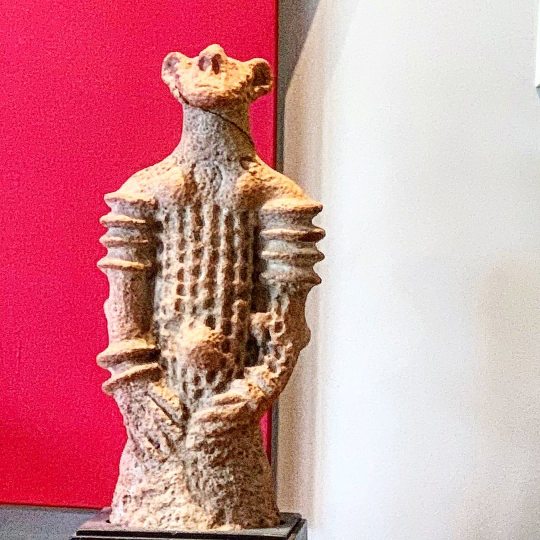
SÉGOU terra-cotta. Sanford Wurmfeld painting. #art#painting#photography africansculpture https://www.instagram.com/p/CAa3to5n7OT/?igshid=161qn0jyqar87
0 notes
Photo

https://hyperallergic.com/493524/sanford-wurmfeld-variations-minus-space/
0 notes
Text
Introducing | 2019 Murray Reich Distinguished Artist Award Recipient Jaune Quick-to-See Smith
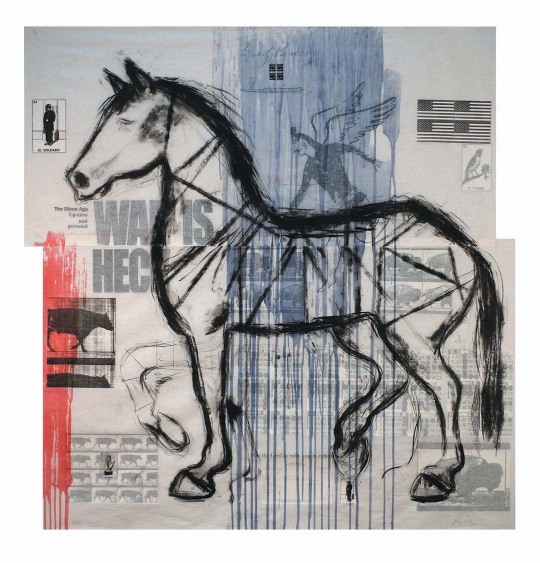
Smith recognized with $12,000 unrestricted cash award for mature visual artists with a long history of creative practice.
New York Foundation for the Arts (NYFA) has announced Jaune Quick-to-See Smith as the 2019 recipient of its Murray Reich Distinguished Artist Award. The $12,000 award, which was established in 2015, recognizes artistic excellence and provides resources to mature visual artists with a long history of creative practice. Smith, an enrolled Salish member of the Confederated Salish and Kootenai Nation, MT, has been creating complex abstract paintings and prints since the 1970s. She is internationally-known as an artist, curator, lecturer, printmaker, and independent professor.
With the support of an anonymous donor, NYFA created this annual unrestricted cash award to enable artists with a long history of creative practice to pursue deeper investigations or new explorations that can inform or enrich their work. It has been developed in memory of the artist Murray Reich, a New York-based painter who also had a highly-regarded career as a professor of art at Bard College.
This year’s Murray Reich Distinguished Artist Award recipient was selected by five panelists from a pool of applicants submitted by a group of anonymous nominators, all of whom are artists or arts professionals from across the United States. This year’s panelists were: Polly Apfelbaum, visual artist; Andrea Arroyo, visual artist; David Breslin, DeMartini Family Curator and Director of the Collection, Whitney Museum of American Art; Nell Painter, writer and visual artist; and Sanford Wurmfeld, visual artist.
“Thanks to our generous donor for helping to recognize artists like Jaune Quick-to-See Smith,” said Michael L. Royce, Executive Director, NYFA. “We’re proud to provide support and resources to artists at all stages of their careers, and this award shines a well-deserved light on artists over 60 who have contributed to the richness of our creative landscape,” he added.

Tribe and community are fundamentals in Smith’s art and activism. A self-described “cultural arts worker,” Smith uses humor and satire to examine stereotypes of American Indian life in contrast to American consumerism. She uses appropriated imagery from commercial slogans and signage, art history, and personal narratives to forge an intimate visual language that carries tremendous weight while feeling light and conversational.
Smith has received numerous awards including the Academy of Arts and Letters’ Hassam, Speicher, Betts, and Symons Purchase Fund; a Joan Mitchell Foundation Painters Grant; and a Women’s Caucus for Art Lifetime Achievement Award. She also holds four honorary degrees and two Governor’s Arts Award from New Mexico and Montana. Her work is in collections at the Whitney Museum of American Art, Missoula Art Museum, Victoria and Albert Museum, Walker Art Center, The Metropolitan Museum of Art, and The Museum of Modern Art. Smith is represented exclusively by Garth Greenan Gallery, New York.
Upon receiving the award, Smith said: “Thank you to the Murray Reich family for this prestigious award, it is a great honor to be recognized from my sandbox in the New Mexico desert. I am truly grateful for this has come at a helpful time.”
Born and raised in Coney Island and the south Bronx, Murray Reich (1932-2012) attended City College and received his M.F.A. degree in Painting from Boston University. Following his first solo show in New York at Max Hutchinson Gallery, Reich was awarded a Solomon R. Guggenheim Fellowship. Reich received other fellowships, including one from the National Endowment for the Arts. His work was exhibited in two Whitney Annuals and at the American Academy of Arts and Letters as well as in solo shows and group exhibitions.
Reich was Professor Emeritus of Painting at Bard College in Annandale-on-Hudson, New York, where he taught for 25 years. He served on the faculty of the Graduate Program in Art at Hunter College, also in New York. He was the inaugural director of Tanglewood’s Summer Program in Art in Massachusetts, and also taught at Boston University. He lived and worked in New York City, Provincetown, and Mount Tremper in upstate New York.
Find out about additional awards and grants here. Sign up for our free bi-weekly newsletter NYFA News to receive announcements about future NYFA events and programs.
Images: Jaune Quick-to-See Smith (Murray Reich ’19), War is Heck, 2002, lithograph, part of The Whitney Museum of American Art’s collection, Image Courtesy: Jaune Quick-to-See Smith, and Jaune Quick-to-See Smith, Photo Credit: Andy Ambrose
#announcements#artist news#murray reich#murrayreich#mature artists#matureartists#mature artist#matureartist#jaunequicktoseesmith#jaune quick-to-see smith#instagram
0 notes
Link
Gradation | The endlessness of color
0 notes
Text
Paintings About Change, Not Perfection
Paintings About Change, Not Perfection
Sanford Wurmfeld, “II-18 + B/2 (Lt-RO-Dk)” (2018), acrylic on canvas, 42 x 85 inches (all images courtesy Minus Space)
George Seurat was influenced by the color theories of Michel Eugène Chevreul, a French chemist who restored tapestries, and of Charles Blanc, who cites Chevreul in his book, Grammaire des arts du dessin(1867). Chevreul’s great contribution was to produce a color wheel of primary…
View On WordPress
0 notes
Text
0 notes
Text
Gabriele Evertz & Sanford Wurmfeld @ Minus Space
via:
Hyperallergic
from Painters' Table - Contemporary Art Magazine: Daily Painting Links on Artist Blogs, Painting Blogs and Art Websites http://ift.tt/2vYUHcP
via IFTTT
0 notes
Text
Hyperallergic: Slippery Geometry and Beguiling Color
Sanford Wurmfeld, “II – 18 + B/2 (YGY-VBV/Ys + Vt)” (2016), acrylic on canvas, 59 x 90 inches (all images courtesy MINUS Space)
The Washington Color School, which was centered in the nation’s capital, included such artists as Morris Louis, Gene Davis, Kenneth Noland, Hilda Thorpe, and Paul Reed. In 1965, Gerald Nordland organized the exhibition, “Washington Color Painters” at the Washington Gallery of Modern Art (June 25 to September 5, 1965), which traveled to other venues, including the Walker Art Center in Minneapolis, helping the group gain national exposure.
As the recent re-hanging at the renovated East Building of the National Gallery of Art makes amply evident, there were a lot of artists interested in the expressive possibilities of color who lived and worked in Washington DC between the late 1950s and the late ‘70s but were not included in Nordland’s landmark exhibition: Anne Truitt, Sam Gilliam, Kenneth Young, and Alma Thomas, for example.
While the Washington Color School is by now a well-known chapter of postwar American art history, there is another, lesser known though no less accomplished group of abstract artists who developed a meticulous approach to the phenomenology of color. Working in New York since at least the mid-1970s, these artists, who are centered at Hunter College, where they taught and, in some cases, continue to teach, have never been fully recognized.
Someday — hopefully sooner than later — an enterprising young curator will organize an exhibition in New York under the rubric, “Hunter Color School,” which will include Doug Ohson (1936–2010), Robert Swain, Vincent Longo, Joanna Pousette-Dart, and others who have taught there.
Two of the artists who are longtime members of the “Hunter Color School” are currently paired in the exhibition, Gabrielle Evertz/Sanford Wurmfeld: Polychromy, at MINUS SPACE (July 8 – August 12, 2017). While the exhibition closes today, the gallery is open by appointment until September 4th.
Wurmfeld, who retired from Hunter College some years ago, and Evertz are longtime colleagues and friends. More importantly, their work is very different from each other, demonstrating that the ontology of color is a wide-open field — a space where research, color theory, and painting can arrive at very different conclusions. Georges Seurat opened the door to this fusion, and generations of artists have taken up the cause.
Evertz’s two recent paintings are done in her signature vertical lines and bands of color interwoven with vertical clusters of gradated gray bands, which taper in a calculated way from the painting’s bottom edge to its top, and vice versa. While Evertz’s work might evoke comparisons with the chromatic abstractions of Gene Davis, the differences between them are sharp and profound.
Gabriele Evertz, “With Your Brightness” (2016), acrylic on canvas, 60 x 60 inches
Davis’s insistently flat paintings tend to accumulate in rhythmic repetitions. They are walls of color that do not invite close scrutiny and, in that sense, exemplify the Minimalist credo neatly summed up by Frank Stella’s famous assertion, “What you see is what you see.” This is not the case with either Evertz or Wurmfeld, which means they have pushed our experience of color further down the road and should be recognized for doing so. Despite claims that there was a point of culmination in painting in the late ‘60s, beyond which no further discoveries were possible, the present state demonstrates otherwise.
In counterpoint to the rhythmic repetition of Davis, Evertz threads the tonal (or harmonic) progressions of gray (the tapering bands) through the bands of varying widths and unvarying color, from muted hues to saturated tints. As a musical analogy, think of Bach’s fugues interspersed with Morton Feldman’s chromatic clusters. The effect is fascinating.
One effect of Evert’s groupings of progressively darker or lighter grays, which are bounded on each side by a blue or orange band, is that they seem to recede or advance spatially, interrupting the painting’s flatness. And yet, we know this to be an effect of the color, not of overt illusionism. Another effect is the tapering of a gray band into an overlapping darker or lighter gray, starting at the top or bottom edge and moving at a predetermined angle until it reaches the opposite edge, which introduces a visual tremor into the painting. This is enhanced by the fact that once you focus in on the tapering, you cannot not quite put together what happens when you step back and take in the painting as a whole. The tapered bands, whose angles become less pronounced, add a disruptive twist to the experience. There is a visual buzz, whose source is not instantly identifiable.
Gabriele Evertz, “I Dream of Spring” (2017), acrylic on canvas, 60 x 60 inches
With Evertz’s paintings, I kept moving in closer and then standing back, focusing on a section and then taking the whole work in. In the square painting “I Dream of Spring” (2017), done in acrylic, there is a particularly pleasurable weaving together of three progressively lighter gray bands, which start at the painting’s left edge, separated by a maroon, magenta, and pink stripe. And then, everything changes as your attention moves across the painting, registering the artist’s different intervals of grays and colors without repeating herself. You suspect there is an overall structure, but you cannot determine what it is. Instead, the painting offers you different paths into and out of its groupings, which are joined together in no predictable manner. Evertz has found a way to be simultaneously improvisational and strict; it is quite a feat.
Sanford Wurmfeld, according to the art historian William C. Agee, “may well be the best little-known painter in New York today.” Interested in color relationships at least since the mid-1960s, Wurmfeld’s work underwent an important shift in 1985, when the artist mistakenly added one more square than he needed while drawing over a grid on a very large painting. As Agee has pointed out in a catalogue for an earlier exhibition, this enabled Wurmfeld to achieve “a new pattern with a continual change in the size and format of the grid.”
By incorporating the mistake into his work, and misaligning the grids, while incrementally thickening the line into a band as he moves across the surface, Wurmfeld makes it possible for the viewer to have a bifurcated experience, each mind boggling in a different way.
Sanford Wurmfeld, “II – 18 + B/2 (YOY-VRV/Ys + Vt)” (2016), acrylic on canvas, 59 x 90 inches
There is the experience of standing close to the paintings and studying the meticulous ingenuity of a structural grid whose overlaid, off-register vertical and horizontal bands increase incrementally, with the colors occupying the gridded spaces increasing or decreasing in tandem with the grid. And yet, even as one becomes aware of Wurmfield’s technique, what happens optically is spellbinding.
While Wurmfeld’s calibrations adhere to a system, we are entranced by our experience of the colors, the way our eyes mix them — something his work shares with Anoka Faruqee’s carefully misaligned patterns. This optical state is heightened as we step back from the painting. The constantly changing spectral light seems to exist separately from the surface, like an independent aura or mirage that varies subtly with the movement of our eyes. The changes may be the result of the way we mix distinct hues at the back of our eyes, but that scientific fact is not something we are overly conscious of in our daily lives. Wurmfeld’s paintings provoke us into that state of awareness. The effect is dazzling.
Gabrielle Evertz/Sanford Wurmfeld: Polychromy continues at MINUS SPACE (16 Main Street, DUMBO, Brooklyn) through August 12.
The post Slippery Geometry and Beguiling Color appeared first on Hyperallergic.
from Hyperallergic http://ift.tt/2hTLufC
via IFTTT
0 notes
Photo

Sanford Wurmfeld painting. Terra-cotta Hippo. Male figure. Elephant. Ancient African sculpture. #art#photography#sculpture#painting#interiors#terracotta https://www.instagram.com/p/B_7xJg6Hsq4/?igshid=v4o5s0jfn6yp
0 notes
Photo
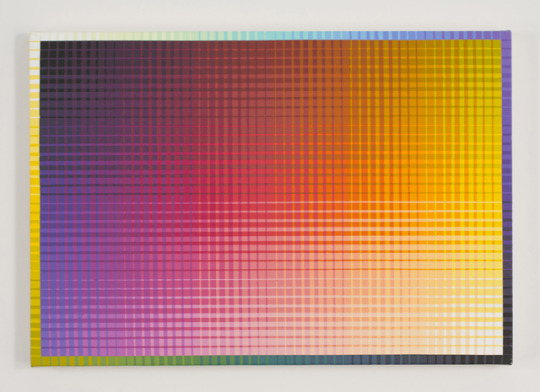
Sanford Wurmfeld, 'II-35 + B (RO C),' 1999, Minus Space
5 notes
·
View notes
